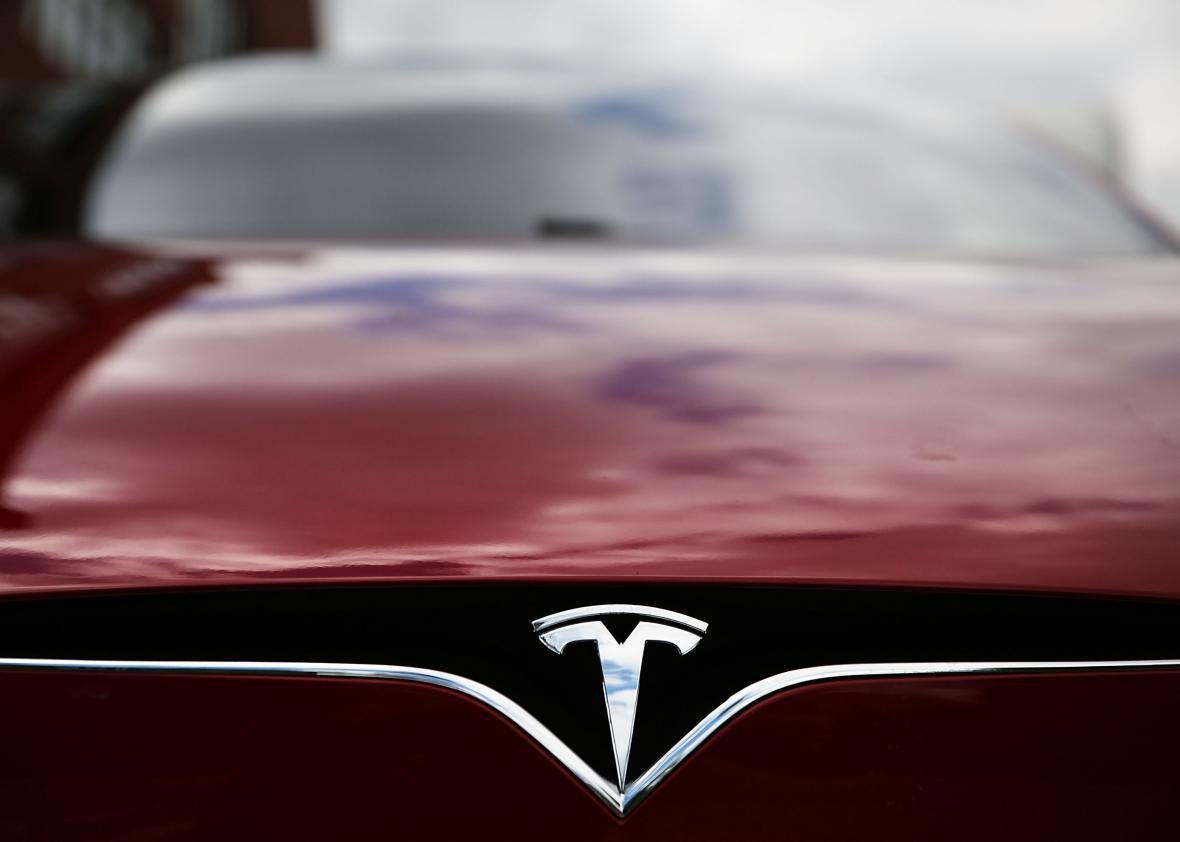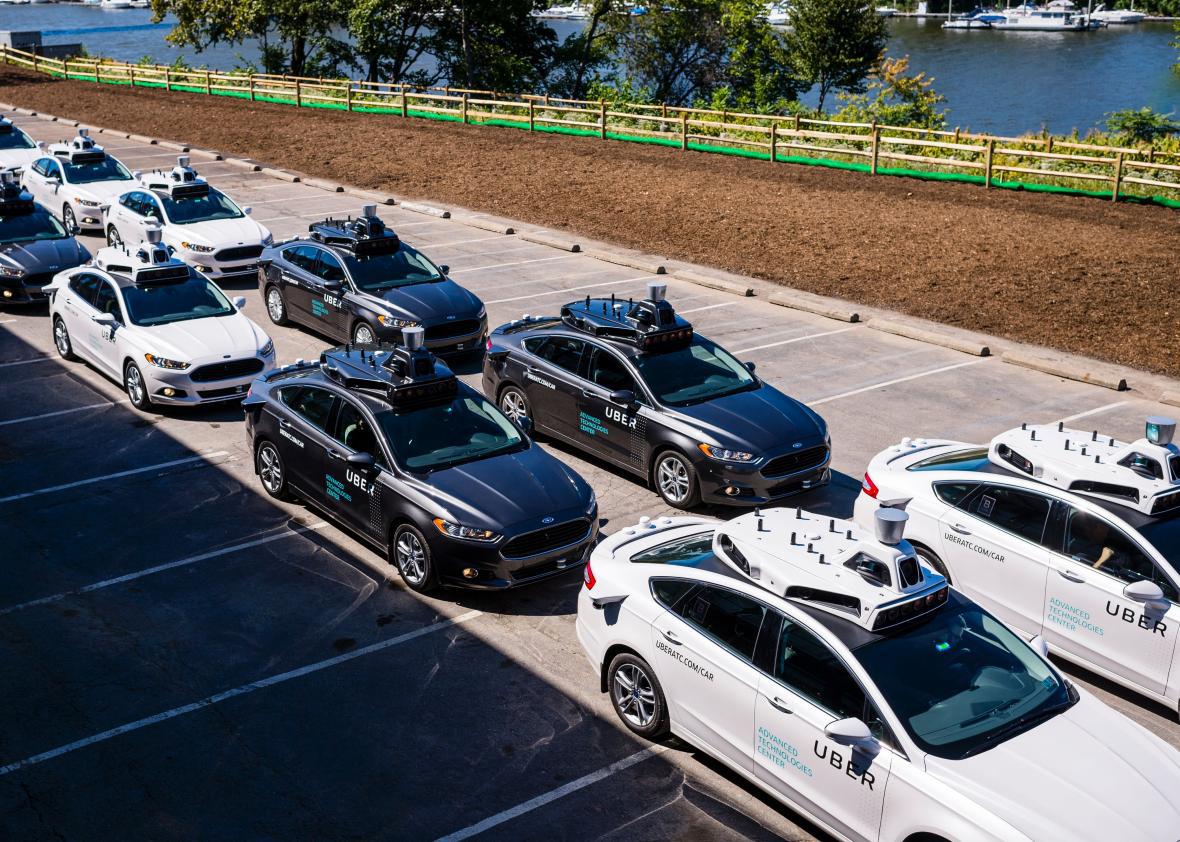The promise of self-driving cars is not simply that of a pleasanter commute. It’s that they have the potential to save lives—lots of lives. Each year more than 30,000 people die on the road in the United States, with the vast majority of those fatalities attributed to human error. Globally, the number is more than 1 million.
These are statistics you hear often from the companies working most aggressively to automate the driving process, such as Uber and Tesla. Both have courted scrutiny by putting cars on public roads with automated driving systems that are far from perfect. Tesla in particular has been criticized by many, including me, for rolling out a system called autopilot that implicitly encourages drivers to relax behind the wheel, yet relies on them to stay alert enough to intervene at a moment’s notice. The pitfalls of this approach became apparent when a driver using autopilot was killed on a Florida highway while apparently watching a movie on a portable DVD player. The death had been foreshadowed by a slew of YouTube videos showing Tesla drivers goofing off behind the wheel while autopilot drove. Meanwhile, Quartz’s Alison Griswold reports that Uber’s “self-driving” taxis—which come with not one but two human co-pilots—are already getting into scrapes in their first weeks carrying passengers on the streets of Pittsburgh.
Tesla CEO Elon Musk defends his company’s technology by comparing the fatality rate for Tesla drivers using autopilot to the overall vehicle fatality rates in the United States and around the world. I find the comparison flawed for several reasons, some of which were well explained by Tom Simonite in the MIT Technology Review in July. We simply don’t have the data at this point to prove that autopilot makes driving a Tesla safer than it would be otherwise. We have even less data on the safety of Uber’s system.
What we can say is that the proponents of automation would seem to have time on their side. The more miles that Teslas and self-driving Ubers cover, the more data the companies gather to improve their systems. Tesla has already released several updates to its autopilot software, the latest of which promises to harness radar signals in more sophisticated ways to buttress its emergency braking system. Musk believes this will eventually make autopilot three times safer than manual driving, although he has not explained how he arrived at this calculation. Regardless, it is possible for two things to be simultaneously true: Today’s automated driving systems have serious safety flaws, and they’ll eventually make our roads safer.
But there’s another side of the equation that tends to get less attention in the self-driving-car debate. It’s the question of whether time is on human drivers’ side, too. That is, are the roads getting safer even without the help of autonomous driving systems?

Photo by Spencer Platt/Getty Images
For almost a century, the answer was a definitive “yes,” at least in the United States. In 1921, the first year such data were collected, 24 people died on American roads for every 100 million miles traveled, according to the National Highway Traffic Safety Administration. That number dropped steadily to 10 by the 1940s, 5 by the 1960s, and by 2013 it was down to 1.08. But a funny thing happened in 2015: The fatality rate ticked upward, to 1.12, due to a 7.7 percent increase in deaths—the largest such jump since 1966. Could it have been some kind of fluke?
It would seem not. On Wednesday, NHTSA released new figures showing that traffic deaths surged another 10.4 percent in the first half of 2016, far outpacing the 3.3 percent increase in miles traveled.
For perspective, the roads are still far safer than they were even a decade ago. But the trend is alarming, and it prompted authorities to announce on Wednesday a new safety initiative whose goal is to end traffic fatalities within 30 years. “We have an immediate crisis on our hands,” NHTSA chief Mark Rosekind said.
It’s too early to pinpoint the crisis’ cause. But suspicions quickly turned toward technology—no, not autopilot or self-driving Ubers, but the technology in drivers’ pockets and on their dashboards that constantly pulls their eyes away from the road. Distracted driving was cited in 10 percent of fatal crashes involving teenage drivers, the Wall Street Journal noted, more than any other age group. If those young drivers don’t change their habits, we can expect the fatality rate to continue growing in the years to come.
What does all of this have to do with self-driving cars? Nothing that will make or break the technology, probably, but there is a connection. If vehicle fatalities were still declining, imperfect autopilot systems like Tesla’s and self-driving systems like Uber’s would have a higher bar to clear to convince the public to accept the bargain. But if they keep rising, these companies will be able to argue that the need for a virtual co-pilot—and, eventually, autonomous vehicles—is growing more urgent all the time.
When the new fatality statistics were released on Wednesday, the Department of Transportation on Wednesday announced $3 million in grants for short-term measures such as rumble strips and seatbelt campaigns. But the government knows those won’t make much of a dent in the long run. In September, the Obama administration published new guidelines that pave the way for greater vehicle automation in the years to come. And Rosekind reiterated Wednesday that automation will play a key role in the plan to address the recent rise in vehicle deaths.
It is concerning that Tesla’s autopilot system might encourage drivers to check their phones at the wheel, especially if the results are sometimes tragic. And one can still make a case that companies such as Tesla and Uber ought to proceed more cautiously with the public rollout of automation than they have so far. But if drivers are going to be checking their phones more and more anyway—and killing themselves and others in the process—then the pressure will only continue to build for a technological solution. That could work to the advantage of the companies that are already racing to provide it.
